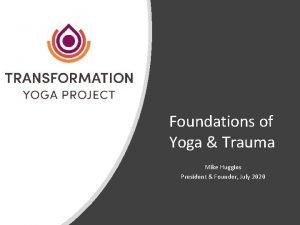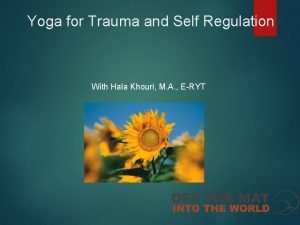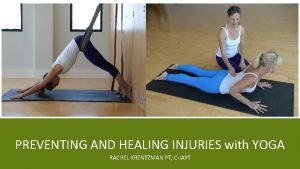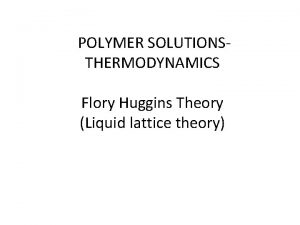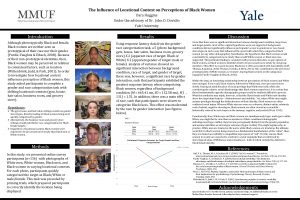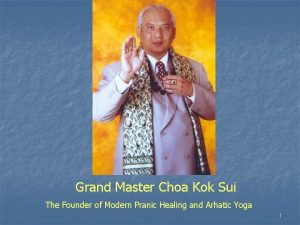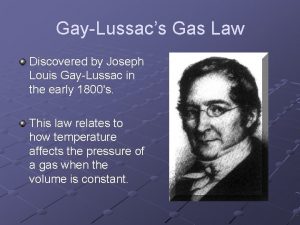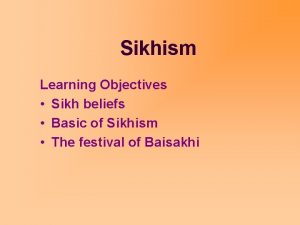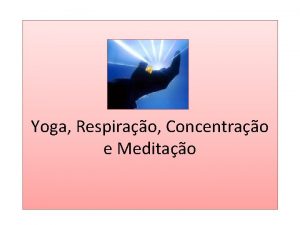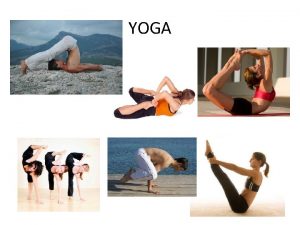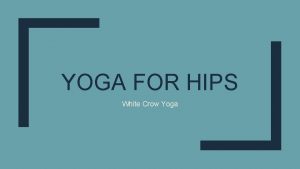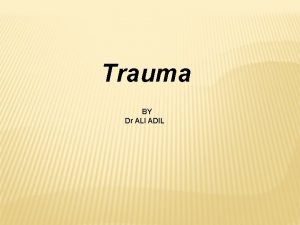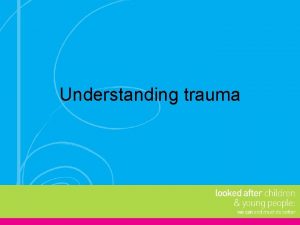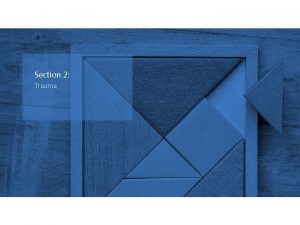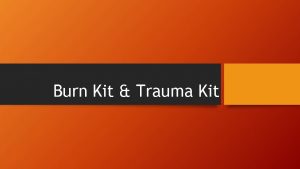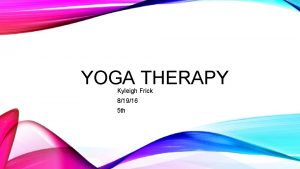Foundations of Yoga Trauma Mike Huggins President Founder

























- Slides: 25

Foundations of Yoga & Trauma Mike Huggins President & Founder, July 2020

Our Mission • Transformation Yoga Project serves people impacted by trauma, addiction, and incarceration through trauma-sensitive, mindfulness-based yoga programs driven by education and research. How we serve • Our highly-trained instructors offer a breath-centered yoga practice based on proven methods to decrease symptoms of anxiety and depression, activate the relaxation response, lower blood pressure, and reduce stress. Where we serve • We facilitate classes and workshops in (JUSTICE) state prisons, federal prisons, county jails, juvenile detention centers, alternative high schools and court diversion programs (RECOVERY) Residential treatment centers, PHP and IOP programs, recovery residencies, behavioral health settings, collegiate recovery clubs, and (YOUTH) schools in underserved districts.

2014 -2019: Unprecedented Growth

2019: Service Levels

2019: Fees and Fundraising

2020: Coronavirus Pandemic Halts TYP Programs • March 2020 • Justice Facilities shut down statewide • K-12 Schools closed statewide • Recovery programs close to outside programming and move services online where possible

Current Activity Interim Activity • Furlough most of staff • Online FB, Zoom Yoga & Meditation also You. Tube Channel • Support frontline COVID organizations Restart Status • Justice programs closed to in person and line – indefinitely – lockdown of most facilities • Recovery – slow restart as they address challenges of congregate living facilities • Youth – unable to accommodate online instructors as focus on establishing academic virtual classrooms

2020: TYP Forced to Furlough Staff - Donates Saved Salaries to Frontline Organizations Post April 1 • Survey of all partners reveals: : – All Justice programs closed to in person as well as on line – indefinitely – lockdown of most facilities – Recovery – Strong commitment to TYP; however, zero interest in online for next 90 days as they scramble to address challenges of congregate living facilities – Youth – unable to accommodate online instructors as they must focus on establishing academic virtual classrooms • TYP forced to: – Pay instructors stipend for all March and ½ April to ease transition to lack of work – Furlough employees until July 15 th – after confirming they will receive adequate financial support due to the CARES act • TYP donates to multiple frontline organizations in recovery and justice to provide support for COVID workers

Impact of Unresolved Trauma • Impaired ability to selfregulate • Impulsive/reactive behavior • Intense emotions drive behavior • Diminished capacity to reason • General sense of trouble Source: Ross, G. 2007 Beyond the Trauma Vortex into the Healing Vortex, International Trauma Healing Institute

Traumatized people… • do not feel safe in their own bodies • view life through the lens of fear • may be a thing of the past but the body keeps reacting as if you are in imminent danger • frequent use of drugs and alcohol to dull the pain Source: Bessel van der Kolk, M. D.

The Body Keeps the Score!!!! Bessel van der Kolk M. D.

What is Yoga? • “Yoga” = to yoke together, unite – body, mind, spirit • Yoga traditionally focused on meditation & breathing • Definition: – Yoga Sutras - Patanjali’s definition. Yoga is the removing of the fluctuations of the mind. – BKS Iyengar – Yoga frees the mind from confusion and the body from stress – M. Huggins: Yoga provides a pathway to our true self.

8 Limbs of Yoga: A Path to Recovery Self-realization/super consciousness (Samadhi) Meditation (Dhyana) Observances (Niyama) Concentration (Dharana) Going inward (Pratayahara) Breathing (Pranayama) Postures (Asana) Abstinence (Yama)

Reported benefits from students having taken classes are: • Reduction of stress • “More able to focus on the positive rather than the negative” • Support in addiction recovery • Greater mental clarity • Pain relief • Improved sleep • “Better able to deal with the mental and emotional strain of prison” • Greater access to inner peace

Positive Effects of Yoga & Mindfulness have been shown to improve: – Stress (lowers cortisol) – Depression – Anxiety – Anger – Trauma (PTSD) – Eating Disorders – AD/HD (due to increasing dopamine? ) – Attention, Concentration, Memory – Insomnia – Immune system function – Cancer, Chemotherapy – Obesity, Blood pressure – Chronic pain, Injury

Vagus Nerve Yoga (and deep breathing) mechanically stimulates the vagus nerve: – “Wanders” from brain, down either side of neck, connects at heart, and connects to ALL major organs – Largest nerve in the body – Controls motor and sensory functioning • brings info back to the brain – Regulates heart rhythms – Stimulates Parasympathetic NS, calms Sympathetic NS

Why Does Yoga Work? Decreases Sympathetic Nervous System arousal – “Stress Response” – “Fight/Flight/Freeze” • Fight – Anger • Flight – Anxiety • Freeze – Depression – Most mental health problems relate to an over-stimulated SNS, which also affects physical health • Increases Parasympathetic Nervous System function – “Relaxation Response” – “Rest & Digest” •

Sympathetic vs. Parasympathetic Source: University of Washington

Why Yoga Helps • Teaches healthy life skills, including balanced exercise, and mindfulness • Provides an alternative stress relief that is healthy • Offers social interaction in a community focused on wellness • Regulates mood

Physical aspect • Helps reconnect with a body often neglected and abused by trauma. – For many there has been a disassociation from the body through trauma. • Teaches engagement of the relaxation response. – When the body is "stressed" (muscle engagement, back bends) and we consciously lengthen and deepen the breath we learn an appropriate way to live with stress off the mat.

Breath work • Can be a key aspect of connecting the mind with the body. • The lungs are the link between the circulatory and nervous systems, and they provide detoxification, energy, and a built-in relaxation response.

Meditation Develops a process of letting go of thoughts. Helps to discern the difference between thoughts and feelings allowing a deeper sense of selfawareness. By becoming less influenced by the world around them, inmates can learn to release reactive behaviors.

Suggestions for Yoga Programs Close collaboration between clinicians and yoga therapists Trauma sensitive type of yoga Strong screening/ intake process Address potential triggers in: – Environment – Teacher attire & qualities – Language – Postures/ Exercises – Assists/ Adjustments • Gather student and clinician feedback, continue to refine the program • •

www. Transformation. Yoga. Project. org Facebook: Transformation Yoga Project Michael Huggins: President & Founder mike@transformationyogaproject. org

• • References Emerson, D. , Hopper, E. (2011). Overcoming Trauma Through Yoga: Reclaiming Your Body. Khalsa SBS, Khalsa GS, Khalsa HK, Khalsa MK, Journal of Ethnicity in Substance Abuse Rosen, T. (2014). Recovery 2. 0 Simpkins, A. (2011). Meditation and Yoga in Psychotherapy: Techniques for Clinical Practice. Van Der Kolk, B M. D. (2015). The Body Keeps the Score. Weintraub, Amy (2012). Yoga Skills for Therapists: Effective Practices for Mood Management. Weintraub, Amy (2004). Yoga for Depression: A Compassionate Guide to Relieve Suffering Through Yoga.
 Mike huggins
Mike huggins Trauma yoga ausbildung
Trauma yoga ausbildung Labelling
Labelling Ducks unlimited checks
Ducks unlimited checks Rj huggins
Rj huggins Henry huggins chapter 3
Henry huggins chapter 3 Flory krigbaum theory
Flory krigbaum theory Dara huggins
Dara huggins The official newspaper of propaganda movement
The official newspaper of propaganda movement Basic principles of utilitarianism
Basic principles of utilitarianism Founder/origins of hinduism
Founder/origins of hinduism Legalism founder
Legalism founder Grand master choakok sui is the founder of
Grand master choakok sui is the founder of Ebay ebates
Ebay ebates Southern colony religion
Southern colony religion Who established ottoman empire
Who established ottoman empire Enagic founder
Enagic founder What gas law was discovered by joseph louis gay-lussac
What gas law was discovered by joseph louis gay-lussac The founder of utilitarianism
The founder of utilitarianism Was bill gates a co-founder of apple
Was bill gates a co-founder of apple Judo origin
Judo origin Dvaita advaita nimbarka
Dvaita advaita nimbarka Sikishm founder
Sikishm founder Microorganisms importance
Microorganisms importance Judaism vs christianity
Judaism vs christianity Leading university faculty
Leading university faculty
